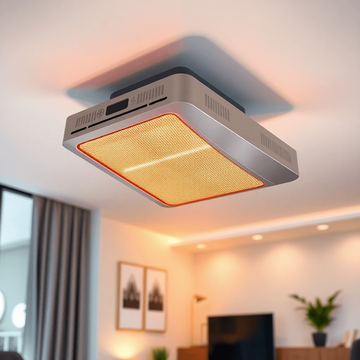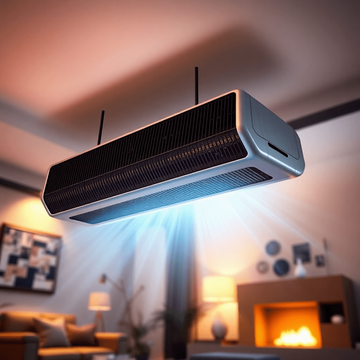Why Infrared Heating is the Future of Modern Construction
Why Infrared Heating is the Future of Modern Construction
As the building and construction industry moves towards more sustainable, efficient solutions, infrared heating is emerging as the go-to choice for housing associations and new homes, commercial properties, and apartment blocks. With growing demands for eco-friendly building practices and more energy-efficient technologies, infrared heating offers an ideal solution for developers looking to modernise their projects and help meet green building standards
Energy Efficiency at Its Best
Traditional heating systems such as radiators or underfloor heating are often inefficient, using large amounts of energy to heat up entire spaces, leading to heat loss and higher energy bills. Infrared heaters, on the other hand, work by directly heating objects and people rather than the air. This means less energy is wasted, and the warmth is felt instantly where it's needed. Infrared technology uses less electricity, reduces carbon emissions, and ultimately leads to lower running costs for the property owners. For a practical breakdown of energy use beyond design theory, see how much infrared heating costs to run in the UK.
Sustainability and Green Building
In today’s construction environment, sustainability is no longer a luxury—it’s a necessity. Infrared heating systems are a green choice, as they require less energy to operate, contributing to a building’s overall energy efficiency and helping it meet environmental standards. Many infrared heaters are powered by renewable electricity sources, making them a perfect fit for projects aiming to achieve sustainability certifications such as BREEAM or Passivhaus. They also help in reducing the building’s carbon footprint, providing long-term environmental benefits.
Space-Saving and Aesthetic Flexibility
Infrared panels are sleek, minimalistic, and unobtrusive. They can be installed in ceilings or walls, meaning there’s no need for bulky radiators or visible pipes. This space-saving design makes them ideal for developments where maximising floor area is important, such as apartments or small commercial spaces. Additionally, infrared heaters are available in a variety of finishes and designs, meaning they can be easily integrated into any style of interior without compromising the overall aesthetic of the building.
Cost-Effective Heating Solution
Infrared heaters are not only more efficient, but they also provide cost savings in the long term. With no need for ducts, pipes, or radiators, installation costs are typically lower than traditional systems, and ongoing maintenance is minimal. Property owners can save money on both energy bills and upkeep, making infrared heaters an attractive option for developers seeking to offer affordable yet high-quality living or working environments.
You can also compare infrared with low-carbon alternatives in our infrared vs air source heat pumps guide.
In conclusion, infrared heating is more than just a trend - it’s the future of energy-efficient, sustainable construction. For builders, developers, and architects looking to modernise their projects and provide cost-effective, comfortable living or working spaces, infrared heating is the smart choice.
Next steps: choose the right infrared heating
Continue with one of these popular options:
- Shop All Panels, accessories & bundles.
- Wattage Calculator Get the right watts for your room.
- How Infrared Works Benefits, costs & installation.






